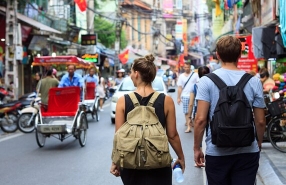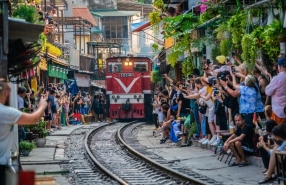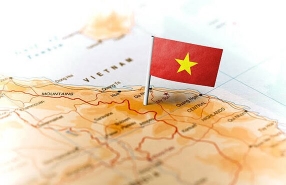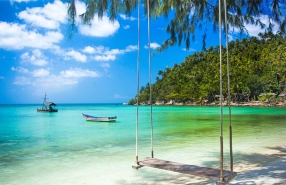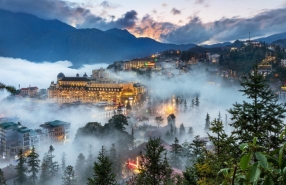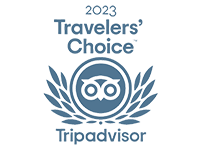Where To Visit In Vietnam? Which Region To Choose For A Memorable Trip?

Vietnam, a country of countless wonders, is divided into three main regions: the North, the Center, and the South. Each region boasts its own charm, with breathtaking landscapes, diverse climates, and a rich cultural heritage rooted in traditions perpetuated by the natives. Where to visit in Vietnam? These differences promise a unique experience depending on your chosen destination. So, which part of Vietnam is the best? Whether you're drawn to the majestic mountains of the North, the idyllic beaches of the Center, or the vibrant energy of the South, this article will guide you in planning the best Vietnam trip to match your desires.
Which part of Vietnam is the best?
I. The North, Central, and South of Vietnam: What are the differences?
Before planning your Vietnam trip, it's essential to understand the fundamental differences between these three regions in terms of geography, climate, cuisine, and culture. Which part of Vietnam is the most scenic? Depending on the topography and climate, each region offers unique landscapes: mountains, beaches, or rivers. By understanding these characteristics, you can easily choose destinations that suit your preferences.
1. Geography and natural conditions
Northern Vietnam showcases distinctions between the Northeast, Northwest, and the Red River Delta regions. The Red River Delta is home to the main urban centers of the North and boasts the highest population density in the country, including the capital city, Hanoi. Where to visit in Vietnam? The eastern provinces bordering the sea, such as Hai Phong and Quang Ninh, are known for their stunning beaches and bays, including Ha Long Bay, Co To Island in Quang Ninh, and Cat Ba Island in Hai Phong, must-visit destinations for your Vietnam trip.
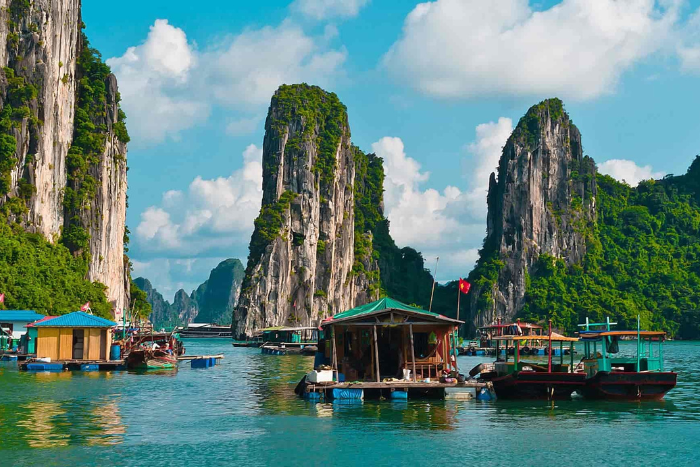
Which region to choose for a Vietnam trip? The terrain of the Northeast region is predominantly composed of low-lying mountains and hills. The terrain gradually rises towards the Northwest, where the provinces are mainly mountainous, with many tropical forests, high hills, and waterfalls. The highest peak in Vietnam is located in this region: Fansipan Mountain in Sapa, Lao Cai - an indispensable site to visit during your Vietnam itinerary. While the population is densely concentrated in the Red River Delta, the Northeastern and Northwestern regions of Vietnam have a sparser population density, especially in the mountainous provinces of the Northwest, which are primarily home to Vietnam's ethnic groups.
Central Vietnam is divided into three main regions: North Central, South Central, and the Central Highlands. What is the most visited place in Vietnam? The North Central and the central coast, thanks to their coastline, are home to the most beautiful beaches in Vietnam such as Cua Lo (Nghe An), Nha Trang (Khanh Hoa), My Khe (Da Nang), or the idyllic Cu Lao Cham Island in Quang Nam. In contrast, Tay Nguyen (Central Highlands), a mountainous region, is vast plateaus with imposing mountain ranges, tropical forests, coffee plantations, and magnificent waterfalls like Dray Nur. This region is inhabited by ethnic minorities such as the Ede, Bana, and Jarai, known for their gong culture and traditional way of life.
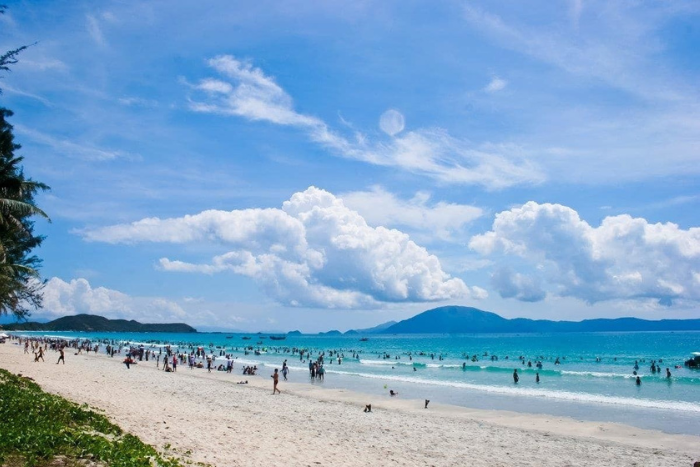
The South is a vast plain with a dense river network, making the Mekong Delta the rice granary of Vietnam. Due to its geographical characteristics, the countryside of the South offers typical landscapes of river regions, with floating markets, fishing villages, boats, coconut forests, or mangroves, which are worth admiring during your Vietnam trip. Ho Chi Minh City, one of the most densely populated cities in Vietnam, is also located in this region.
To know more:
>>> Vietnam map
>>> 15 day Vietnam itinerary
2. Weather and Climate
Vietnam's climate is divided into three distinct regions: the North, the Center, and the South, each with its own unique climatic characteristics. The North has a humid subtropical climate, characterized by four distinct seasons. Winters are cold and dry, sometimes very harsh, while summers are hot and humid, often accompanied by heavy rains.
The climate of the Center is more complex due to the diversity of the terrain. The North of the Center is influenced by the Northeast monsoon, with cold winters, while the South of the Center experiences a long dry season and a shorter rainy season, particularly pleasant on the coasts. However, the Center is also the region most exposed to typhoons. It is therefore recommended to check the weather forecast before planning a Vietnam tour.
South Vietnam enjoys a tropical monsoon climate, with two distinct seasons: the rainy season from May to November and the dry season from December to April. The climate is warm year-round, ideal for outdoor activities.
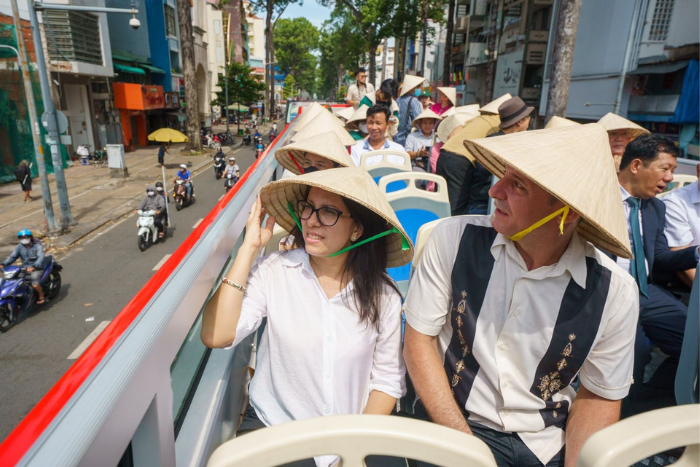
>>> Best time to visit Vietnam
3. Cuisine
What to eat in Vietnam ? Vietnam’s cuisine is rich and diverse, with each region having its own specialties. The North emphasizes balance and finesse of flavors, with light dishes such as Hanoi pho, bun cha, banh cuon, and com.
The Center is renowned for its intense and spicy flavors, often prepared with care. Local specialties include bun bo Hue (beef noodle soup), banh beo, banh nam, and Quang noodle, which harmoniously combine salty, sweet, and spicy flavors. The South has a sweeter, richer, and more generous cuisine, with iconic dishes such as Saigon banh mi, hu tieu Nam Vang, banh xeo, com tam, and various ches.
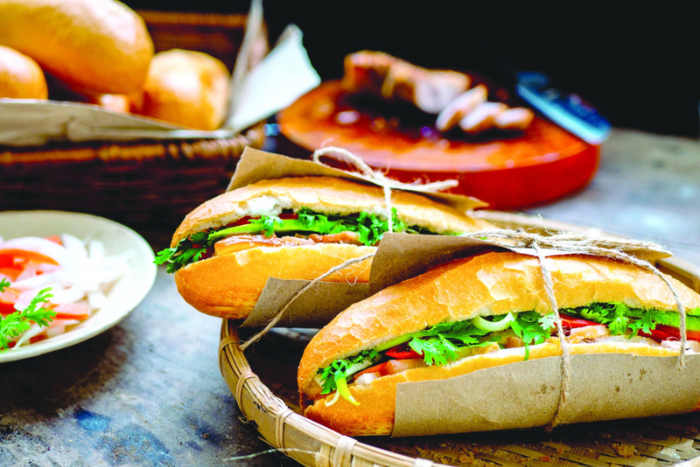
In summary, each region of Vietnam offers a unique culinary experience, and together they form a world-renowned Vietnamese cuisine. Tasting culinary specialties is one of the things to do during your Vietnam trip.
II. Where to travel in Vietnam? Which part of Vietnam is the best?
Which part of Vietnam is the best? It depends on your preferences and travel style because each region has famous tourist attractions, breathtaking natural landscapes, and unique cultural experiences. What to visit in Vietnam? If you love the sea and relaxing getaways, head to the central coastal region with its stunning beaches or visit iconic bay destinations like Ha Long Bay or Phu Quoc, where you can relax on luxury cruises during your Vietnam itinerary.
Visit Vietnam for those interested in exploring the culture and traditions of ethnic minorities, the northern mountainous provinces such as Sapa or Ha Giang, or the Central Highlands, offer immersive experiences. If you want to experience the riverside life of the southern region, visit Ben Tre, Can Tho, or other provinces in the Mekong Delta.
So, what is the best destination in each region? For the most fulfilling experience, explore all the highlights of each area:
1. The North
Hanoi: The capital of Vietnam harmoniously combines ancient and modern beauty. You can stroll around Hoan Kiem Lake, visit the Temple of Literature, or explore the Hanoi’s Old Quarter to experience the local rhythm of life. Don’t miss the iconic dishes like pho, bun cha, and egg coffee.
Halong Bay (Quang Ninh): What is the most visited place in Vietnam? As a UNESCO World Heritage site, Ha Long Bay is one of Vietnam’s most visited spots. You can go kayaking, admire the sunrise on a cruise, visit caves, explore fishing villages, and enjoy wonderful moments on a Halong Bay cruise – an essential part of any tourist's Vietnam trip.
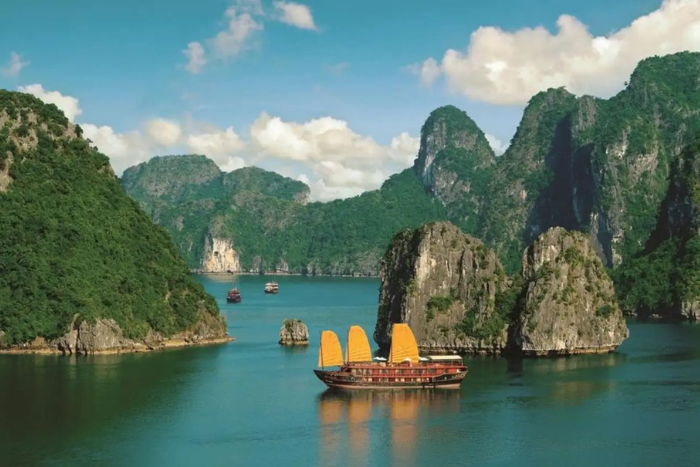
Ninh Binh: Known as “Ha Long Bay on land,” Ninh Binh - one of the top places to visit in Vietnam, features Trang An Scenic Landscape Complex, Tam Coc-Bich Dong, the historical Hoa Lu Ancient Capital, and picturesque mountain and rice field scenery.
Sapa (Lao Cai): This misty town offers a cool climate year-round. Visitors can conquer Fansipan, the “Roof of Indochina” or admire the stunning terraced fields in Muong Hoa Valley. Ethnic villages like Cat Cat and Ta Van provide vibrant cultural experiences in your Vietnam trip.
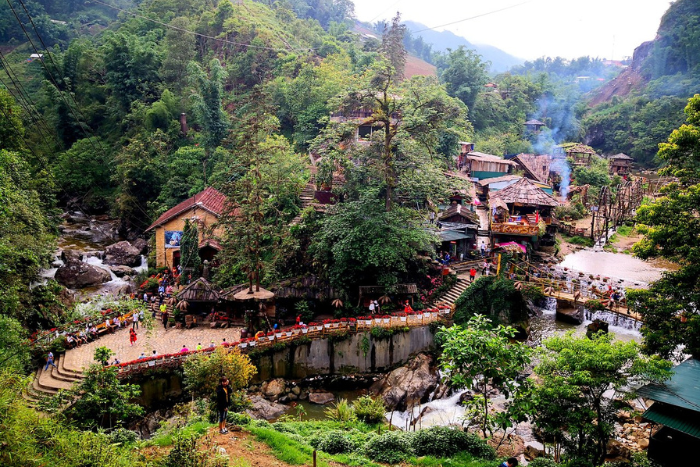
Ha Giang: Famous for its wild and majestic natural scenery, Ha Giang is perfect for adventure enthusiasts with winding mountain roads. The region also captivates visitors with terraced fields, buckwheat flower fields, and the charming culture of local ethnic children.
>>> Explore North Vietnam Tours for a memorable journey
2. The Central region
Which part of Vietnam is most scenic? If you’re a beach lover, you’ll surely be captivated by the stunning blue beaches in the cities along Central Vietnam.
Hue: Known as the ancient capital of Vietnam, Hue is famous for its historical sites like the Imperial City and the royal tombs of the Nguyen emperors. Visiting the Thien Mu Pagoda by the poetic Perfume River and exploring the local cuisine—such as Hue beef noodle soup (bun bo Hue), mussel rice (com hen), and steamed rice cakes (banh beo)—are the top things to do in Hue.
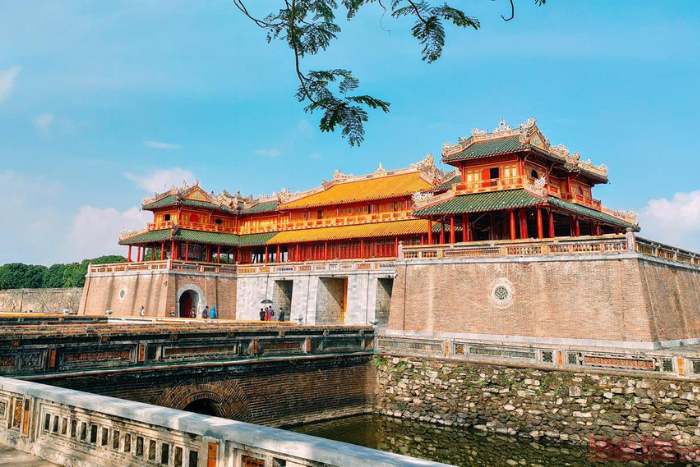
Da Nang, one of the best places to visit in Vietnam. Famous for Ba Na Hills Resort, the iconic Golden Bridge, and My Khe Beach—ranked among the most beautiful beaches in the world, Da Nang is one of the ideal destinations for tourists during their Vietnam trip.
Hoi An: What to visit in Vietnam? Discover the ancient town of Hoi An who has a special charm for international visitors, not only for its vibrant lantern displays at night but also for its tailor shops, which offer expertly crafted clothing at very reasonable prices. Beyond the old town, you can enjoy your Vietnam itinerary at An Bang Beach and the Cham Islands with crystal-clear waters, perfect for activities like diving and coral sightseeing.

You may also like:
>>> Tour Da Nang Hoi An Hue 5 days
>>> What to do in Hue in 3 days?
>>> Vietnam Travel Guide
Nha Trang: This lively and modern coastal city is renowned for its long beaches, white sands, and clear blue waters, top places to visit in Vietnam. Visitors can explore Vin Wonders Nha Trang, snorkel at Hon Mun Island, or visit the Ponagar Tower.
Tay Nguyen (Central Highlands): What to do in Vietnam? Known for its vast highlands, the Central Highlands are rich in the unique culture of ethnic minority groups. Da Lat, the “City of a Thousand Flowers,” attracts visitors with its cool climate and romantic scenery. The region also offers unforgettable cultural experiences during your Vietnam itinerary, like coffee picking, elephant riding, and living like the locals.
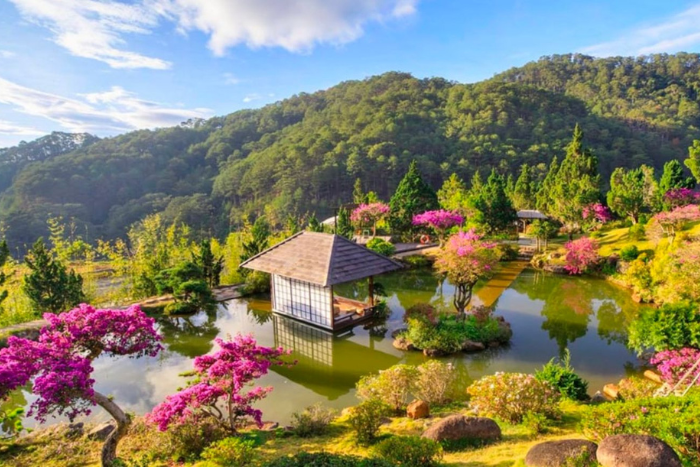
3. The South
Which part of Vietnam is the best? If you want to experience the bustling life of a big city while also immersing yourself in the countryside with rice fields and fishing villages, the Mekong Delta is the perfect choice for you.
Ho Chi Minh City: As Vietnam's largest economic and cultural hub, Ho Chi Minh City beautifully blends modernity with tradition. The city is home to iconic landmarks such as the Independence Palace, Notre-Dame Cathedral Basilica, Ben Thanh Market, and the War Remnants Museum. Don’t miss the vibrant nightlife at pedestrian streets like Nguyen Hue and Bui Vien if you visit Vietnam.
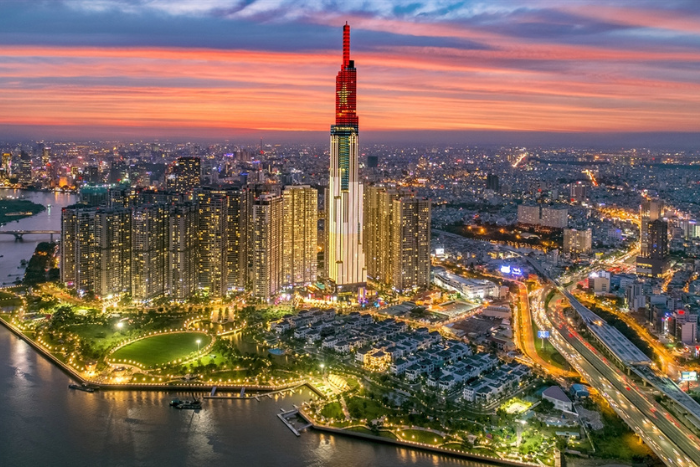
Ben Tre: Known as the "land of coconuts," Ben Tre offers serene riverside scenery, making it perfect for those seeking peace and a taste of Southern culture, the best answer to the question “Which region to choose for a memorable trip?”. Visitors can explore famous islets like Long Islet, try making traditional coconut candies, paddle along small canals, or savor local specialties such as grilled snakehead fish and coconut pancakes.
Can Tho: Known as the “capital of the Mekong Delta,” Can Tho is famous for the Cai Rang Floating Market, where visitors can experience the unique culture of river trading. It’s an excellent destination in your Vietnam itinerary to immerse yourself in the water-based lifestyle of the region.
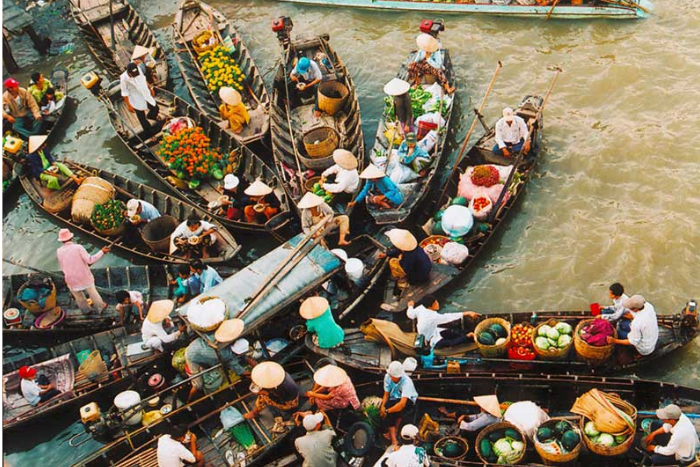
Ba Ria - Vung Tau: Vung Tau is an ideal destination for relaxation, with its pristine Back Beach and Front Beach. The city is also famous for fresh seafood and local delicacies like Vung Tau mini pancakes (banh khot).
You can refer to:
>>> South Vietnam Tours
>>> 4 days in Ho Chi Minh City
>>> All things to do in Ben Tre
III. Travel tips for a Vietnam itinerary
Which part of Vietnam is the best? To fully experience Vietnam’s culture, consider taking a trip that explores all three regions: North, Central, and South. Each region has its own unique beauty, cultural characteristics, people, and cuisine. If you’re unsure how to organize a suitable itinerary, let Autour Asia, a trusted Vietnam travel agency, help you plan a seamless journey from North to South.
What to do in Vietnam? Vietnamese cuisine is incredibly diverse and rich, with each region offering its own specialties and distinct flavors that you must try. However, if you have food allergies, especially to seafood, be sure to check with restaurants before ordering. Many popular tourist destinations, such as Ha Long, Cat Ba, Da Nang, Nha Trang, and Ba Ria-Vung Tau, are known for seafood-based specialties.
Don’t pack too many clothes or items because shopping in Vietnam is convenient and affordable. Besides shopping at malls, you can visit local markets to find high-quality clothing at reasonable prices that suit the local weather and reflect Vietnam’s unique charm. Additionally, quick and affordable tailoring services in Hoi An are highly popular among tourists.
Make sure to check the weather and national holiday schedules in Vietnam before planning your Vietnam trip. Travel to Vietnam during the rainy or stormy season might disrupt your itinerary. During major national holidays, service and travel costs can rise significantly due to increased demand from both local and international tourists.
Where to visit in Vietnam? Overall, all three regions of Vietnam are worth exploring. Visiting them will give you a diverse experience of food, culture, and people, and you will surely have your own answer to discover which region to choose for a memorable trip. Plan a balanced Vietnam itinerary to fully immerse yourself in local life without feeling rushed or exhausted.
You may also like:
>>> How Long To Spend In Vietnam?
>>> Vietnam Travel Guide
>>> Vietnam Trip Package Deals 14 Days
>>> Vietnam Packages Tours
It depends on your preferences. Every region of Vietnam has its own breathtaking beauty. If you love mountainous landscapes and terraced fields, head to the northwestern provinces. If you prefer the sea and islands, visit Ha Long Bay or the pristine beaches of central Vietnam. For cave exploration, Phong Nha - Ke Bang is a must-see.
If you want to discover all three regions of Vietnam, plan a 3-week Vietnam itinerary. This schedule allows you to visit the best tourist sites in Vietnam such as Hanoi, Ho Chi Minh City, Halong Bay, Sapa,… while having authentic experiences with the indigenous inhabitants in all regions of Vietnam.
In addition to exploring Ho Chi Minh City, visiting Ben Tre or Can Tho is a must in the Mekong Delta. This vast delta region is crisscrossed by rivers and canals, offering stunning water and paddy field landscapes. You can try basket boating in Ben Tre or visit the Cai Rang Floating Market in Can Tho for a closer look at the local culture.
Related travel guide
Other similar articles
CUSTOMIZABLE BY LOCAL EXPERTS
Personalized trip at the original price!
REFUND GUARANTEE
We believe in our work and promise to give you money back.
GOOD PRICE / QUALITY
95% satisfied more than expected!
24/7 LOCAL SUPPORT
We are always available online to provide assistance at any time.
Most read articles
Autour Asia is highly recommended on
Embracing the mission of "Satisfied more than expected" and providing authentic experiences, we have received numerous recommendations on reputable travel forums:













